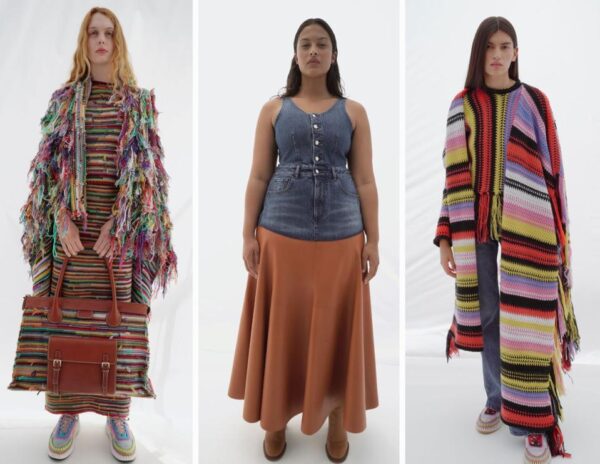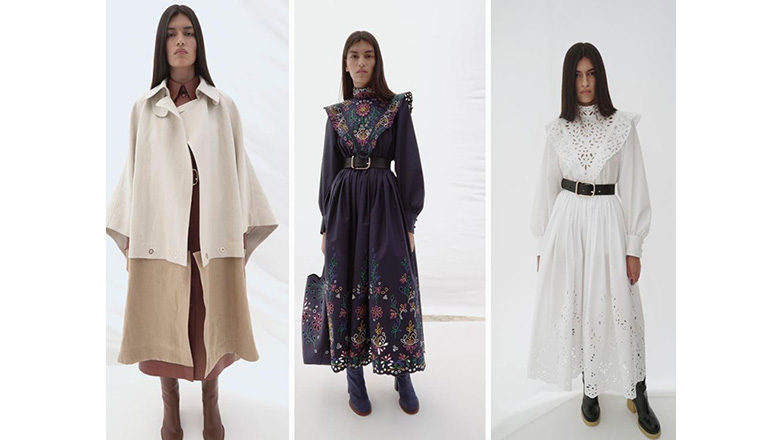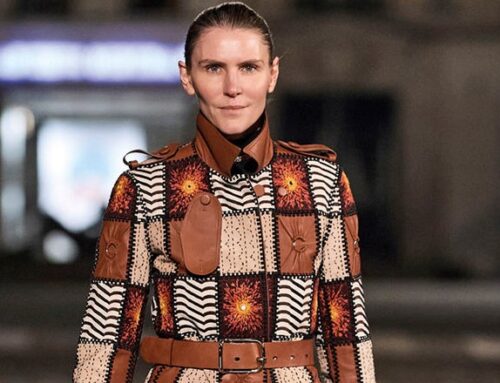Forbes highlights Gabriela Hearst’s Spring 2022 collection, which continues the House’s ecological awareness and social impact in fashion.
From organic silk, recycled cashmere and deadstock materials, all of which are present in fifty-five percent of the spring ready-to-wear collection. And, fifteen percent of the collection is manufactured by the World Fair Trade Organization (WFTO) fair trade-guaranteed members, Akanjo and Manos del Uruguay.
“The fictitious but utterly delicious state of being in love,” notes Hearst in a statement about the collection. “I couldn’t start this journey at Chloé without love being the emotion as a driver.”
Getting inspiration from a corresponding arts and crafts movement at the turn of the 20th century, which arose as a response to dehumanizing effects of the Industrial Revolution— as well pre-Raphaelite portraiture depicting romantic representations is the direction Hearst took in creating the collection.
Hearst paralleled these movements of the past to today, with humanity being shaped by two major events: climate change and the digital revolution. A lingering hope is that Neo-Renaissance combining creative and scientific forces all for the hope of bringing about a climate success and digital by design.

PARIS, FRANCE- Gabriela Hearst has unveiled her second collection, Chloé’s Spring 2022 that continues the House’s eco-conscious and social impact in fashion. PHOTO CREDIT: CHLOÉ
Hearst and her team partnered with Made51, an initiative by the United Nation Refugee Agency, which provided embellishment on the handbag designs in the collection. And, refugee women from Afghanistan, who specialize in heritage embroidery will receive an income from collaborating with the House with their designs.
Of the handbags in the collection, eighty percent are lower-impact leather sourced from tanneries certified by the Leather Working Group (LWG). The cotton lining is replaced by linen, a lower-impact fabric. Bags made from denim are comprised of leftover stock from past collections. Most of the leather was used for the shoes come from LWG-certified tanneries. The Kamy line of shoes are made from deadstock jersey.
As denim makes up a large part of the collection, all of it is sourced from deadstock fabrics, in line with the House’s sustainable footprint of reusing what has already been produced. The components of the denim are fully recyclable. Through circular denim and a Life Cycle Analysis, done in collaboration with Quantis, five indicators ensure the impact of Chloé’s denim: Ecosystems, human health, climate change, water, natural resources (land use, non-renewable energy resource depletion, mineral resource depletion). Hearst’s Circular Denim collection includes eight fights in two washes from shorts, to slim straight, to crop boot-cut, to flare and workwear. The House’s founder Gaby Aghion named her products and Hearst carried on the tradition with the ready-to-wear in the circular denim collection with names from: Stromboli, Pacata, Semeru, and Tambora.
Written by Allyson Portee for Forbes





